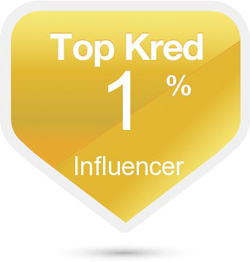How much has the Fast Food industry changed the way we eat? Lots! But how much have the different generations changed how we eat? Dusan Goljic shares some insights into the industry and what we ate as Baby Boomers and what we eat now!
How the Change of Generations Changed the Fast-Food Industry!
By Dusan Goljic
Fast food restaurants in the US have been present since the 1920s. In 1921, the company White Castle opened its first-ever hamburger selling outlet. It was a revolution in the food industry. Not because it was a massive success, but because it was the first step that will create an industry now worth around $570 billion.

Today, fast food restaurants are everywhere around us. Thousands of different brands are competing for their place in the sun. McDonald’s, which was established in 1940, today has over 38.000 restaurants worldwide. They really did their best in building the business.

Still, it wouldn’t be possible to do this if the habits of the consumers also didn’t grow. In this article, we’re going to go over some details to show how the fast-food industry managed to be what it is today.
The Food Buying Differences Between Generations
An interesting study showed that, as generations pass, every next one spends less on food and beverage.
The facts show that the Baby Boomer generation spent 14.7% of their income on food during the time they were 25–35 years of age. During the same age, Gen X spent 13.2%, and the millennials spent 13.1%.
The differences are due to different prices of food over the years and the different cooking habits. Before the Baby Boomers, fast food restaurants didn’t exist, and the concept of buying food off the street was not as popular as today. Most people cooked in their homes.

Millennials Don’t Like to Cook
Millennials, on the other hand, as a generation that is at its peak at the moment, have very different habits than the previous generations. They’ve been growing with technology their whole life and the internet revolution is not strange to them. Thus, they spend a lot more time online and less time in the kitchen.
According to the fast-food statistics, 80% of all US citizens eat out at least once a month. When it comes to millennials, they do this a lot more often. In fact, they spend 44% of their food money outside their home.
Another important fact here is that millennials represent 22% of the entire population, and their spending power is over $600 billion. With this in mind, it’s clear why so many fast-food chains manage to grow so big with their businesses.
Gen Z Will “Flatten the Curve”
The curve of success for fast food restaurants was growing with the previous generations, but with the generations Z and Alpha, it seems like things are going to slow down a bit. Gen Z, which is now almost 25 years of age, is well informed about the positive and negative sides of the industry.
They are looking for functionality and health benefits, and don’t care about the brand. However, that’s not stopping them from eating out even more than millennials do. Even though not every Gen Z person is eligible to order their own portion in restaurants, they still spent $552 million on food outside their homes in 2018.
Conclusion
In 1970, Americans spent around $6 billion on fast food. Some 40 years later, in 2012, this number reached $160 billion. Some might say that 40 years is a lot of time to call this a huge success, but it’s still a $154 billion difference.
Let’s say that the spending on food habits of Americans never changed since the Baby Boomers. The fast-food industry would’ve been much different than it is now. With the change of life that millennials brought, everything changed for fast food restaurants too.
About the author: Dusan Goljic, Pharm.D., Medical Writer

By day, I work with drugs behind the counter. By night, I think about apostrophe misplacements. By day, I try to explain substances to others, and by night, I explain complex sentence structures to myself. I am a pharmacist and a writer.
Stevie Wilson,
LA-Story.com
________________________DEALS and STEALS(Affiliate Links)
I curate deals that offer bonuses, bargains, and great products –and some are very specifically for this site to feature to my audience because I want my audience to get amazing products from great brands!
Disclosure: some of the links on this post might have affiliate links! It costs you nothing. If you buy something, the brand pays me a small percentage.
If you purchase via my link, I make a very small percentage for that purchase. It does not add any additional cost to the product. The price you see is the retail price (depending on store or vendor) .
Sunscreens Are Essential in Summer: Try COOLA Full Spectrum 360 Sun Silk Drops SPF 30

COOLA’s breakthrough Sun Silk Drops— your daily Full Spectrum 360° protection from the sun, environmental toxins, and digital overexposure.
Their advanced organic formula is light-as-air yet protects against broad-spectrum UVA/UVB, IR (infrared), and HEV (high energy visible) Light, meaning they’ve got you covered from beach to board meeting. A fast-absorbing complex blend of plant stem cells and patented LightWaves Defense [JS+M] technology helps to prevent visible signs of aging from both indoor and outdoor daily aggressors. Finally, full-spectrum organic skincare that keeps up with your everyday modern lifestyle!
What else you need to know:
This product is formulated without oxybenzone. It is vegan, non-GMO, TSA-friendly, and cruelty-free.
Available at Sephora.com and Coola.com
Subscribe to RSS headline updates from: http://feeds.feedburner.com/la-story/Bpyd
Powered by FeedBurner
If you are going to feature content from LA-Story.com including images, podcasts or videos including the accompanying text, please respect copyright provisions. We require a notation of content origination (meaning credit tag), a link- back to the specific page & please email the link to [email protected] before the piece goes live.
LA-Story.com, LA-Story Recessionista, Celebrity Stylescope, Celebrity Style Slam Trademark/Copyright: KBP Inc./TNBT Inc 2007-22












